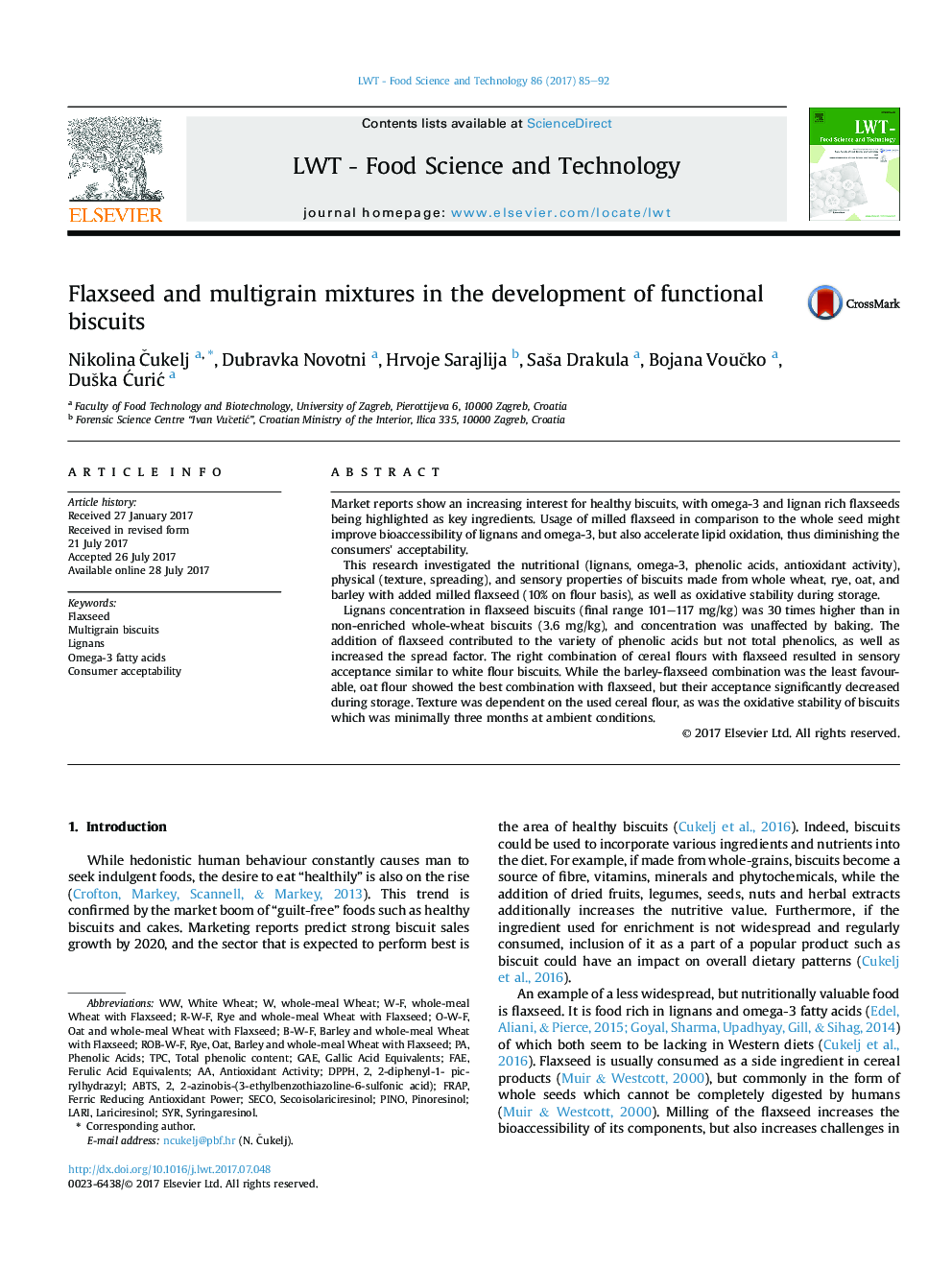| کد مقاله | کد نشریه | سال انتشار | مقاله انگلیسی | نسخه تمام متن |
|---|---|---|---|---|
| 5768663 | 1628513 | 2017 | 8 صفحه PDF | دانلود رایگان |
- 10% flaxseed biscuits have a substantial amount of lignans and omega-3 fatty acids.
- Lignans are stable during the process of biscuit baking.
- Combination of different cereal mixtures results in a sensory acceptable products.
- Barley addition emphasizes the flaxseed aroma in biscuits.
- Multi-cereal biscuits with flaxseed are promising diet improvement approach.
Market reports show an increasing interest for healthy biscuits, with omega-3 and lignan rich flaxseeds being highlighted as key ingredients. Usage of milled flaxseed in comparison to the whole seed might improve bioaccessibility of lignans and omega-3, but also accelerate lipid oxidation, thus diminishing the consumers' acceptability.This research investigated the nutritional (lignans, omega-3, phenolic acids, antioxidant activity), physical (texture, spreading), and sensory properties of biscuits made from whole wheat, rye, oat, and barley with added milled flaxseed (10% on flour basis), as well as oxidative stability during storage.Lignans concentration in flaxseed biscuits (final range 101-117Â mg/kg) was 30 times higher than in non-enriched whole-wheat biscuits (3.6Â mg/kg), and concentration was unaffected by baking. The addition of flaxseed contributed to the variety of phenolic acids but not total phenolics, as well as increased the spread factor. The right combination of cereal flours with flaxseed resulted in sensory acceptance similar to white flour biscuits. While the barley-flaxseed combination was the least favourable, oat flour showed the best combination with flaxseed, but their acceptance significantly decreased during storage. Texture was dependent on the used cereal flour, as was the oxidative stability of biscuits which was minimally three months at ambient conditions.
Journal: LWT - Food Science and Technology - Volume 86, December 2017, Pages 85-92
